26 Jun Whales in the Woodgrain with Michael Cundall Jr.
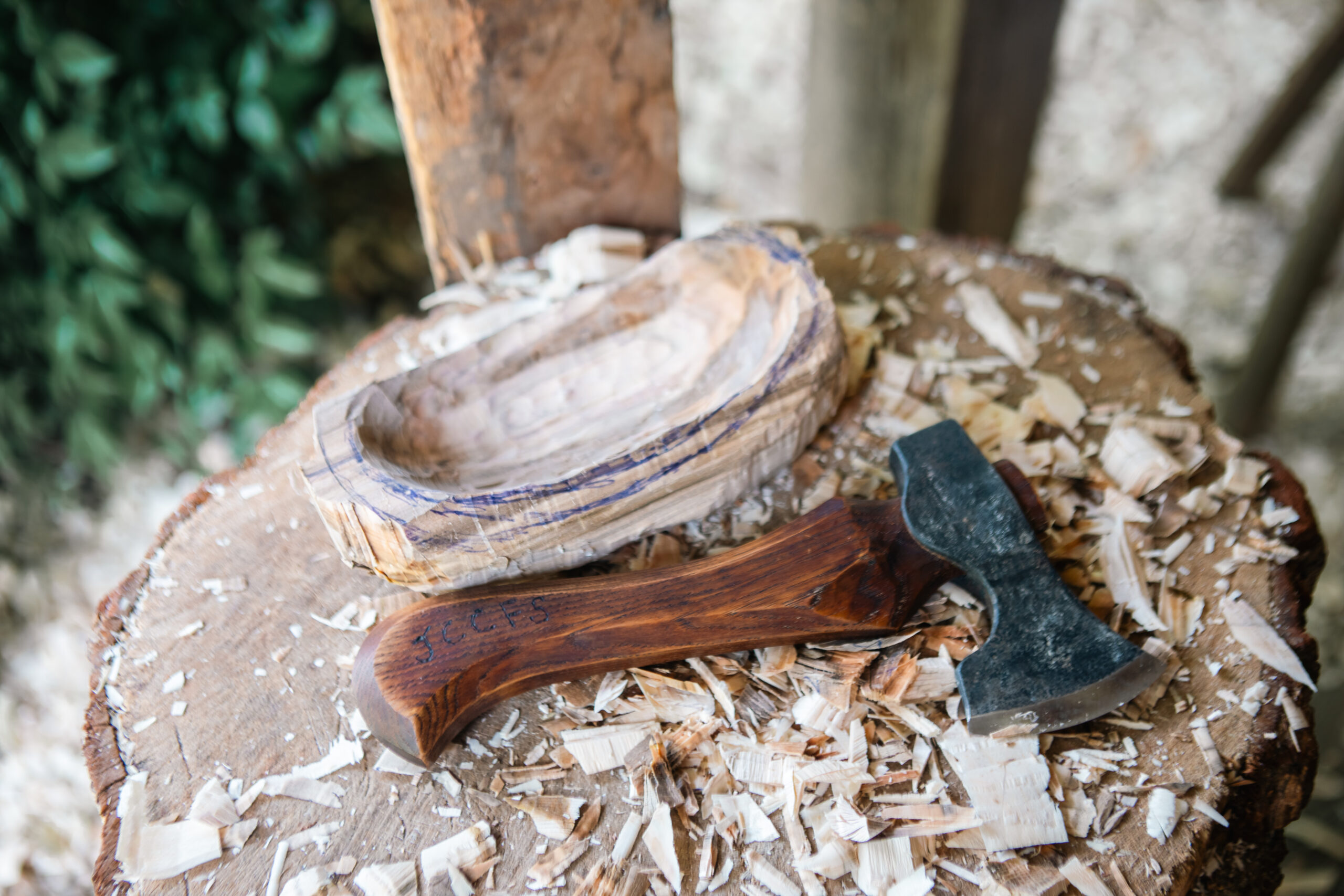
Learn more about Folk School instructor and Philosophy Professor Michael Cundall’s creative process and his work with cherry wood sourced from campus near Mill House.
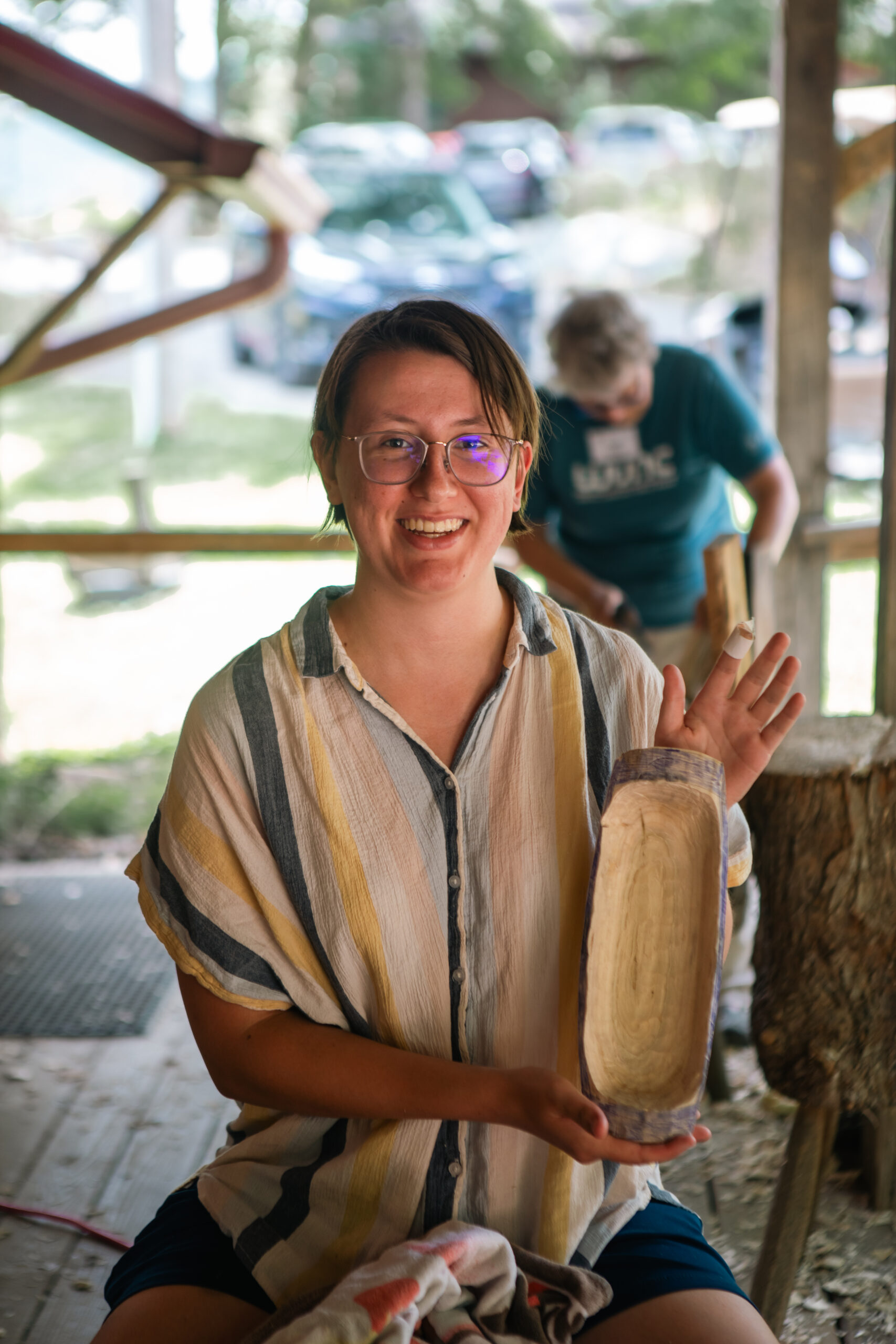
Kayla Schlueter is a work study from Georgia, showing off the progress they’ve made carving a greenwood bowl.
Upon entry, a collection of bowls are visible just inside the door, each offering a beautiful display of nature and artistry. In the cherry wood’s rich, warm grain, Cundall saw something more than the average woodworker— he unveiled a creature surfacing from imagination, beckoning him to carve into a three-month long journey of whittling, sanding and drying.
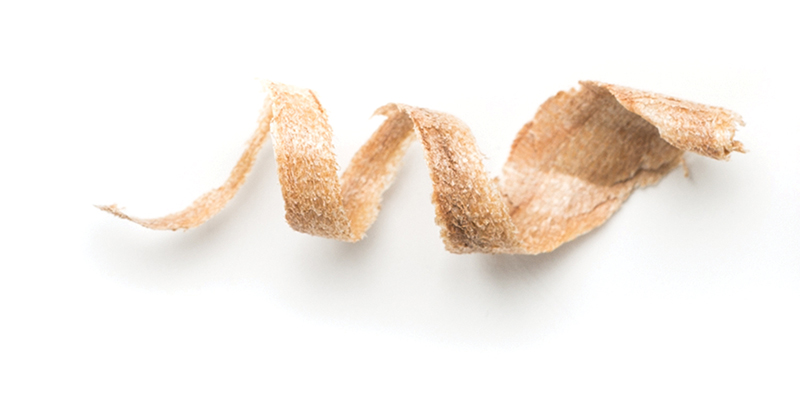
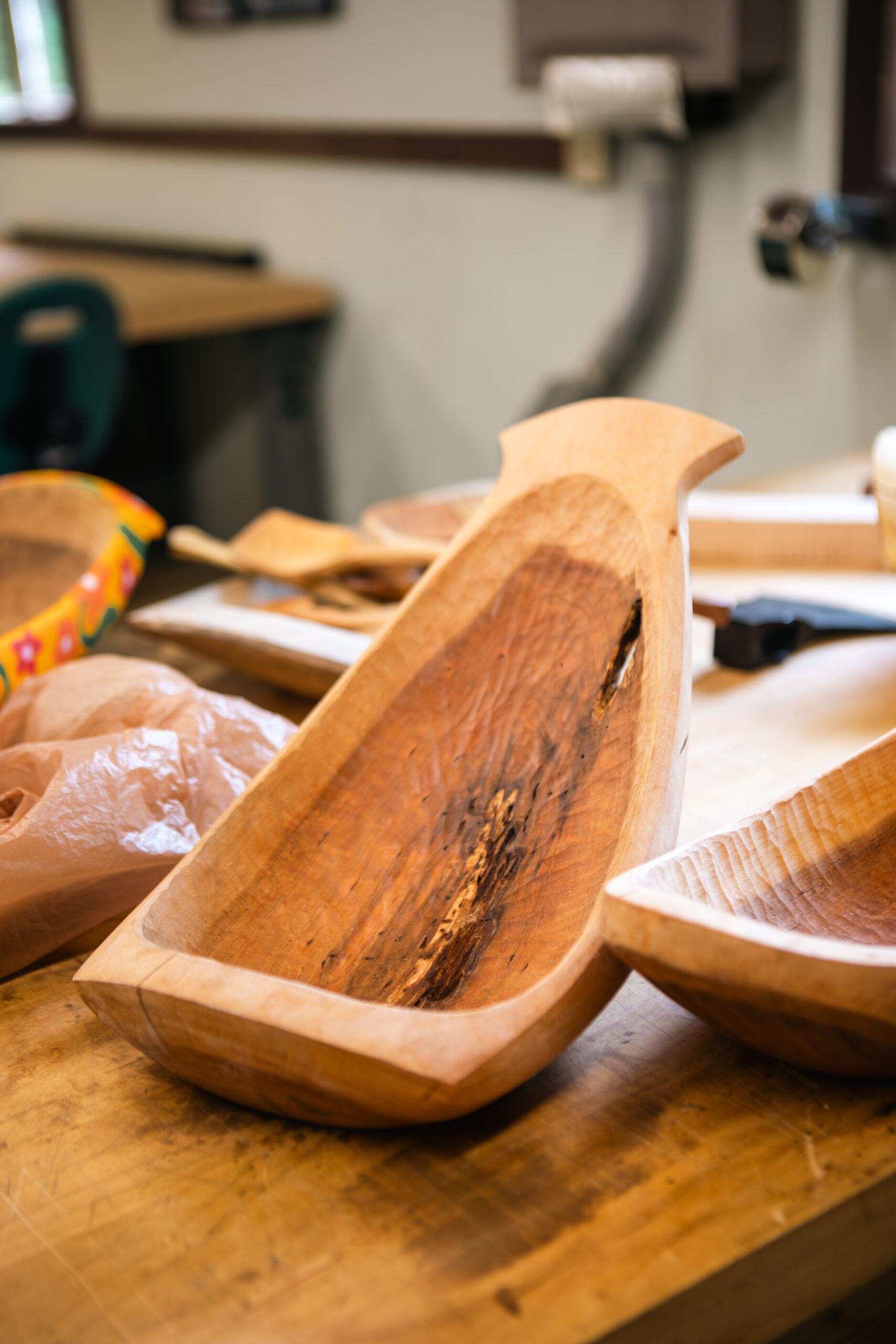
One of the bowls completed by Michael Cundall using timber from a cherry tree on campus.

Tucked beneath a quiet canopy just beyond the Blacksmith Shop is the historic Mill House, its red roof peeking through the foliage. Designed by Leon Deschamps in the 1920s, the building once served as the first wood shop on campus. Today, it offers a comfortable place of rest for friends of the Folk School, but the legacy of woodcraft still lingers in its walls, and more recently, its trees.
Not long ago, a gangly cherry tree stretched tall and unruly beside the Mill House, eventually leading to its gentle removal. Its time as a tree ended, but its story did not, soon finding new life in the hands of woodcarver and philosophy professor, Michael Cundall.
Following the rhythmic sound of mallets and the scent of fresh-cut timber, you’ll find yourself at the Woodcarving Studio on campus. Here, students chip away at projects, laboring with care, shaping and sanding away until they reach desired form. Here, Cundall is instructing Greenwood Spoon and Bowl Carving, exuberantly leading students and working on projects himself.
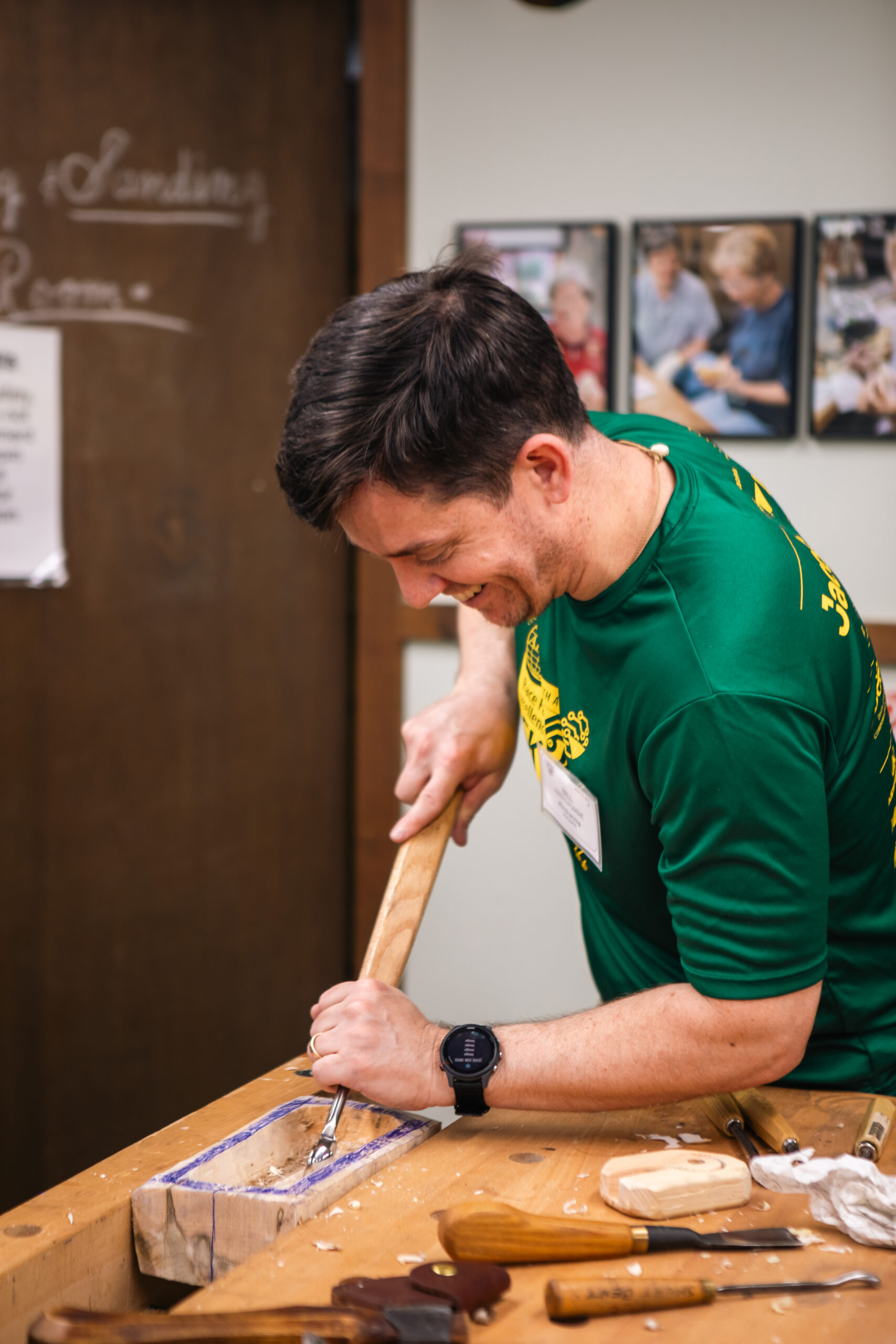
Bill Abercrombie, a woodcarving student from Maryland chips away at his project in the studio.
“They had those curves in them, that’s why I was like ‘yes! I want that wood, bring it to me!’ My students are like, ‘why can’t we have wood like that?’ I say, ‘you’re not good enough yet,’” Cundall jokes. “The real answer, really, is there’s not enough to go around and people are going to get in a fight, and I’m going to have to let it, you know, Thunderdome style.”
For Cundall, the cherry wood and the unique properties of its growth help shape his artistry into a collaboration with the medium, encouraging and inspiring the challenge of creating a one-of-a-kind woodcut.
“I like it when it has curves because it makes me respond to the wood more, like I have to work with it as opposed to drawing a form and making it work. I’m like, ‘well, this is what I got, this is what I can do,’ so I work with whatever piece so it’s less me and more we,” Cundall said.
What once shaded Mill House now rests in new form, sanded and swimming with meaning. A tree’s quiet afterlife, held in the curves of wood shaped by careful hands.
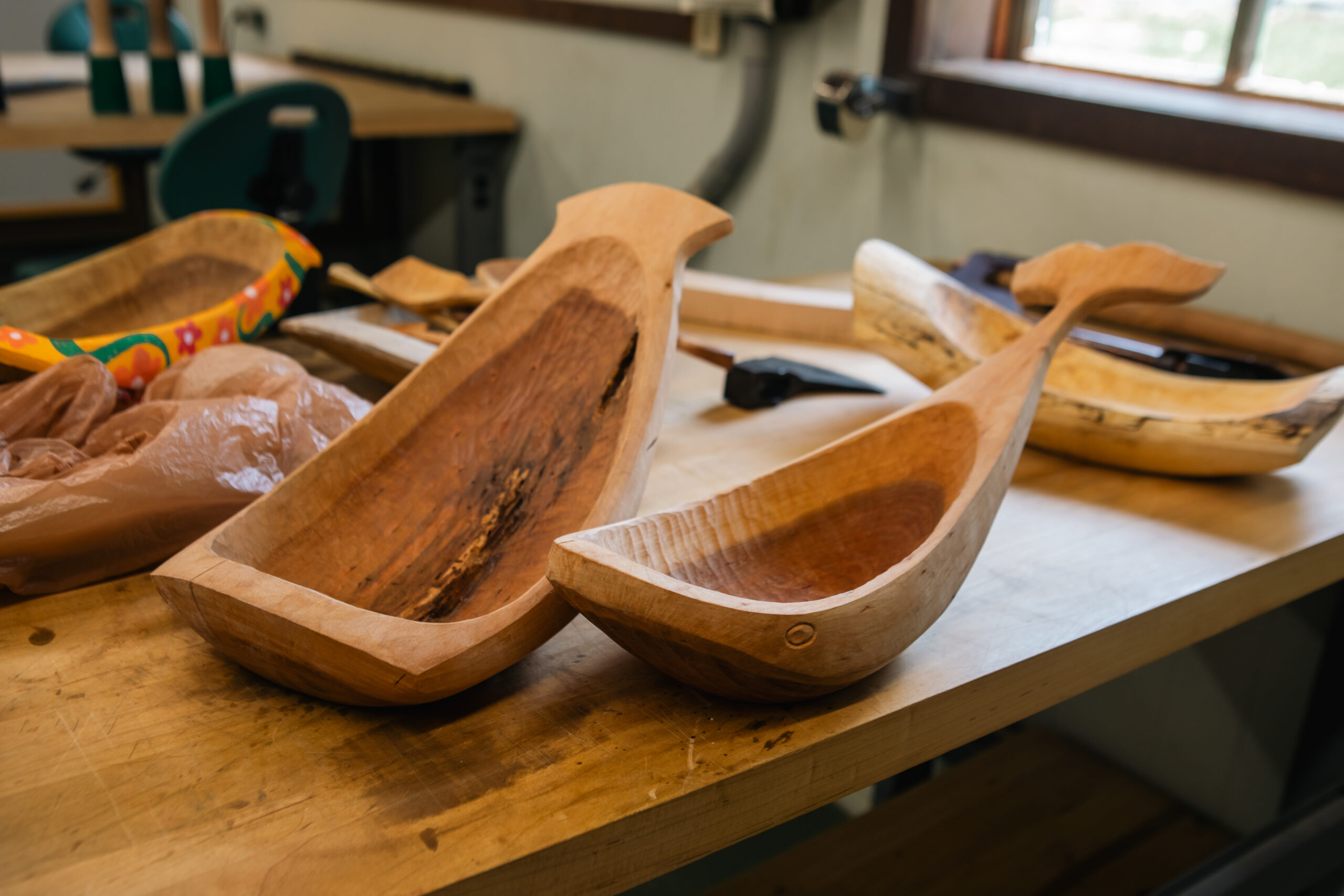
A pair of cherry bowls by Michael Cundall.



Sorry, the comment form is closed at this time.